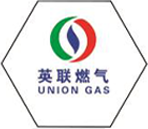
Nov . 01, 2024 08:45
Back to list
Regulating Home Appliances for Enhanced Safety and Energy Efficiency
Understanding Appliance Regulators Ensuring Safety and Efficiency in Appliances
Appliance regulators play a critical role in the world of home and industrial equipment. They serve as essential components that ensure the safe and efficient operation of gas-powered devices, such as appliances, heaters, and ovens. Understanding their function and importance can significantly enhance both the safety and efficiency of our daily interactions with various devices.
At its core, a regulator is a device that controls the pressure of gas or another fluid. In the context of appliances, these regulators ensure that the gas reaching the appliance is delivered at a steady, suitable pressure. This regulation is vital for maintaining appliance performance, safety, and longevity. Without a functioning regulator, appliances may receive either too much or too little gas, potentially leading to hazardous situations, inefficient operation, or even equipment damage.
There are several key functions of appliance regulators. The primary purpose is to reduce the high pressure of gas from a source, such as a propane tank or natural gas line, to a manageable level appropriate for the appliance. This process not only prevents excessive pressure that could lead to explosions or leaks but also optimizes the combustion process within appliances. Proper combustion results in better efficiency, reduced emissions, and a lower environmental impact.
appliance regulators

Moreover, appliance regulators are designed with a fail-safe feature, ensuring that gas flow is cut off in case of malfunction or leakage. Many modern regulators come equipped with additional safety features such as over-pressure shutoff mechanisms and indicators for gas detection. These innovations enhance safety, providing users with peace of mind while using their appliances.
When selecting appliances with built-in regulators, or when purchasing separate regulators for installation, it is crucial to consider compatibility with the gas type being utilized (e.g., propane vs. natural gas) as well as the specific pressure requirements of the equipment. Improper matching can compromise safety and efficiency, leading to performance issues or dangerous situations.
Regular maintenance of appliance regulators is essential. Over time, dirt and debris can accumulate, affecting the regulator's performance. Manufacturers often recommend periodic checks and maintenance by qualified technicians to ensure safe operation. Users should also familiarize themselves with the signs of malfunction, such as irregular flame behavior, unusual sounds, or gas leakage odors, which may indicate a need for inspection or replacement.
In conclusion, appliance regulators are indispensable components that contribute to the safe and efficient operation of gas-powered devices. Understanding their purpose, maintaining them properly, and ensuring they are appropriate for specific appliances can significantly enhance safety and performance in our homes and workplaces. With proper attention to appliance regulators, users can enjoy the benefits of their devices while minimizing risks and maximizing efficiency. As technology advances, we can expect even more innovations in regulator design, further improving the user experience and safety in our interactions with gas-powered appliances.
Latest news
-
Safety Valve Spring-Loaded Design Overpressure ProtectionNewsJul.25,2025
-
Precision Voltage Regulator AC5 Accuracy Grade PerformanceNewsJul.25,2025
-
Natural Gas Pressure Regulating Skid Industrial Pipeline ApplicationsNewsJul.25,2025
-
Natural Gas Filter Stainless Steel Mesh Element DesignNewsJul.25,2025
-
Gas Pressure Regulator Valve Direct-Acting Spring-Loaded DesignNewsJul.25,2025
-
Decompression Equipment Multi-Stage Heat Exchange System DesignNewsJul.25,2025

